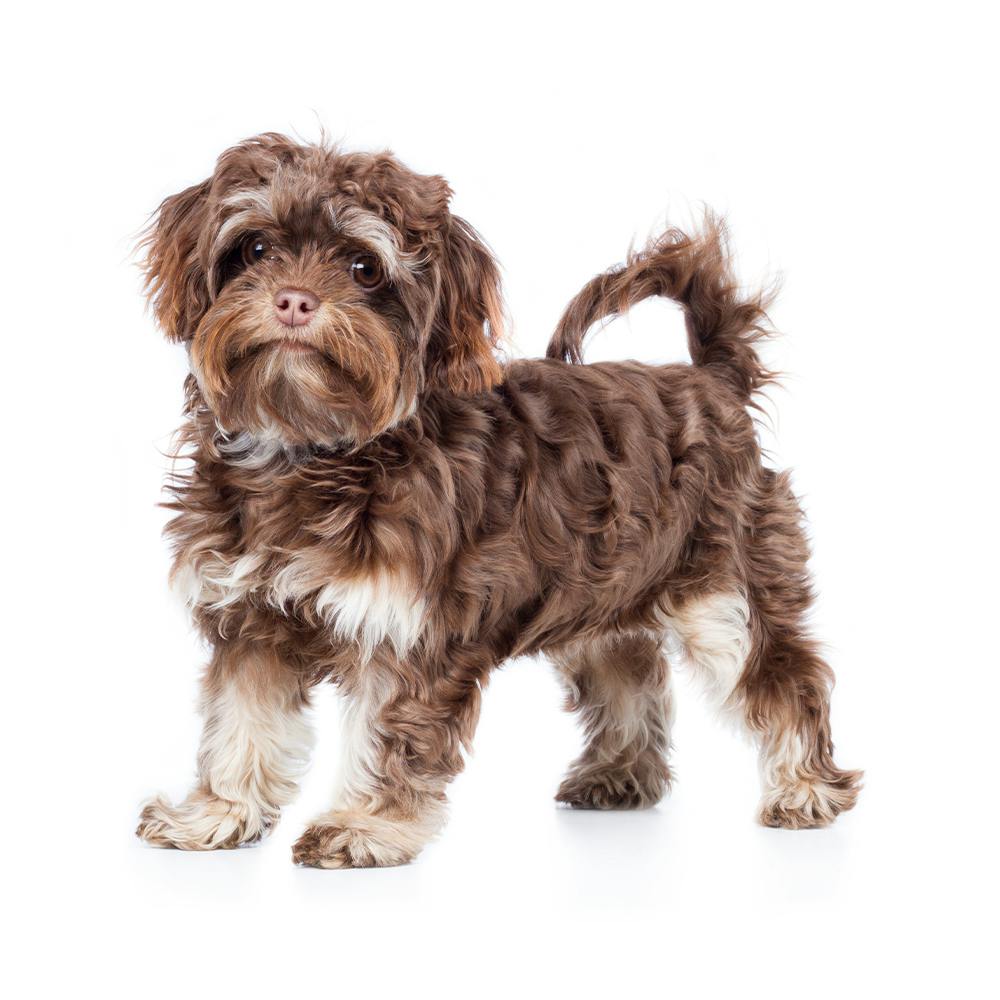
Bolonka
The Russkaya Tsvetnaya Bolonka breed, also called Bolonka for short, originated in Russia. The breed was developed in the mid-20th century, primarily in Moscow and Leningrad, where small, lap-sized dogs were in high demand among urban dwellers who lived in small apartments. These dogs were created from a mix of other small breeds including the Bichon, Shih Tzu, Pekingese, French Bulldog, and the Toy Terrier. After the fall of the Iron Curtain, these dogs became more internationally known and were gradually imported to other countries. As a result, Bolonkas can now be found around the world, although they remain a relatively rare breed.
- Origin
- Russia
- Alternate Names
- Russian Colored Bichons, Russian Lap Dogs
- Life Expectancy
- 14-20 years
- Average Male Height
- 11 inches
- Average Female Height
- 11 inches
- Average Male Weight
- 6-9 pounds
- Average Female Weight
- 6-9 pounds
- Coat Length
- Medium
- Coat Type
- Wavy
- Coat Colors
- Black, Blue, Brown, Cream, Fawn, Gray, Red, Silver Wolfgray, Black Brindle, Grizzle, Brown (Black Overlay), Red (Black Overlay), Black & Tan, Red Sable, Golden, Sable
- Coat Pattern
- Tan Points and/or Markings, Fawn Markings, Brindle, Saddle Pattern, Silver Markings, Black Mask
Genetic Predispositions and Health
Russian Tsvetnaya Bolonka, or Bolonka, can suffer from degenerative myelopathy and progressive rod-cone degeneration. Genetic testing for these and other conditions such as chondrodystrophy and intervertebral disc disease (CDDY and IVDD risk) with or without chondrodysplasia (CDPA) can assist veterinarians with diagnosis and proactive care, as well as help breeders identify affected and carrier dogs.
Personality and Behavior
The Bolonka is a sociable, intelligent, and affectionate breed that thrives on human companionship. They're often great with children and can get along well with other dogs and pets. Despite their small size, they are known for their courage and are not typically timid or shy. Bolonkas are relatively easy to train and they respond well to positive reinforcement. As with any dog breed, socialization from a young age is important. This breed tends to be fairly active and enjoys playtime, but they are also happy to settle down and cuddle. Their adaptable nature makes them suitable for a variety of living situations, from apartments to houses with yards.
Fun Facts
According to the AKC, Russkaya Tsvetnaya Bolonka translates to "Russian Colored Lapdog."
"Bolonki" is the plural form of the breed's name.
The Bolonka's origins are believed to reach as far back as early 18th century Russia.
The Bolonka was selectively bred to have a coat with soft, looping curls that were very easy to maintain and didn't require special grooming products. This was a direct response to the lack of availablity Russians living in a Communist State had to the shampoos, conditioners, and other grooming products that would be needed for a higher maintenance coat.
References
https://vgl.ucdavis.edu/test/cddy-cdpa
https://www.akc.org/dog-breeds/russian-tsvetnaya-bolonka/